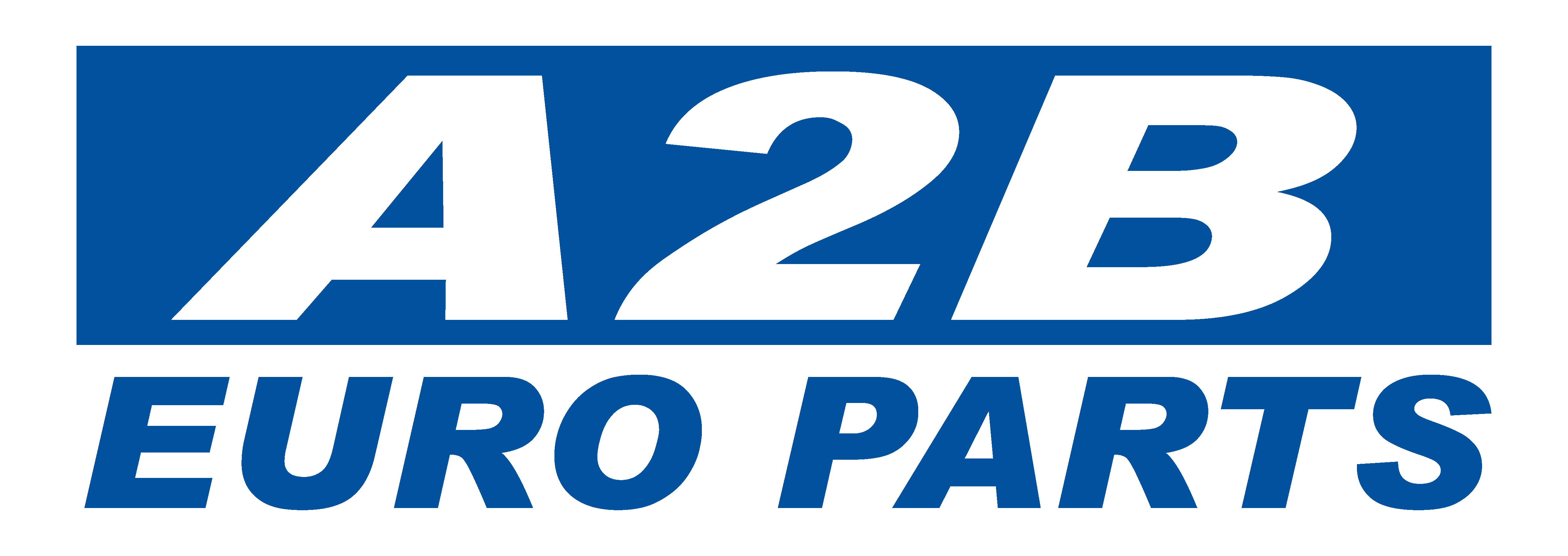Frequently Asked Questions
We often get asked very similar questions in regards to trailers and towing. We have comprised a list below of some of our most common questions with detailed answers.
How often do I need to get my trailer serviced?
It is extremely important that your trailer is serviced/maintained by a qualified trailer mechanic. Trailers which are in daily use such as commercial, fleet, hire or plant trailers, we recommend trailers should be serviced every 6 months or so. Where trailers are not on the road every day but are frequently used we recommend a service every 12 months. It is essential that the trailer is closely visually checked over prior to use and every week.
Where can I find the recommended tyre pressure for my trailer?
Variant trailers are fitted with a tyre label/sticker. It is usually located on the front of your trailer around the area of your drawbar. This sticker will contain information such as the tyre pressures. Or contact our service team and they will email to you.
Is it necessary to keep my trailer clean?
Maintaining & keeping your trailer clean is important as it will enhance the trailers lifetime. It will give you a higher resale value when you go to sell or trade in. It is fine to use a power washer on your trailer provided a gentle detergent is used. You must not direct hose at electrics/lighting. It is important to remember that hard abrasive chemicals should not be used as these can damage the protective coating already on your trailer. Use of a quality vehicle wash/wax solution and soft brush scrub is preferable. Use grease and proprietary lubricant like WD40 or Lanox or Inox on moving parts. If you have a question that is not answered above please use the form below to ask your question and we will get back to you shortly.
The brakes are stuck on my trailer when I go to drive away, and the handbrake is off what can I do?
This can happen when your trailer is left parked up for a long period with the handbrake applied in the on-position, particularly during periods of damp weather conditions. When you apply the handbrake on your trailer the brake shoes, which may be damp, are applied to the brake drum. Then, when you disengage the handbrake the brake shoes remain temporarily stuck to the inside of the brake drum on one or more wheels. There is no damage or fault to your trailer and a simple solution, as outlined below, will remedy the issue. -firstly try reverse the trailer -this often releases the brake shoes. OR 1. Determine which of your wheels is stuck, it usually is just one wheel. 2. Using a hammer tap each wheel stud, which holds the wheel in place, a few times. Take care not to hit the wheel rim. This will send a vibration to the brake shoes and will disengage the shoes from the drum. Do this a few times until the moisture seal breaks and releases the brake shoe from the brake drum. 3. If, for any reason, this does not work please phone A2B Trailers service department for advice.
What is the difference between a braked trailer and an unbraked trailer?
No brakes are required for trailers with a single axle that do not exceed 750kg (GTM) Gross Trailer Mass. This might apply to a trailer carrying a light dinghy or canoes. If the trailer & load combined weight is 750kg or more, you will need override mechanical or hydraulic brakes. If together they weigh up to 2,000kg, brakes are required on least one axle. They can be override mechanical brakes or override hydraulic brakes. Where the GTM is over 2,000kg, the trailer will need to have brakes operating on all wheels. You can use European certified override hydraulic brakes, our choice is Knott or Al-ko mechanical override braking. Any trailer over 2,000kg GTM (up to 3500kg) must also have an approved breakaway system in case the trailer becomes disconnected from the towing vehicle while in transit. Under these circumstances, the brakes must remain applied for at least 15 minutes.
What height should my towing hitch be on my towing vehicle?
The correct hitch/ball height of the towing vehicle is critical when towing a trailer. The correct hitch height should position your trailer as close to level as possible, when hitched on. If the hitch height is not correct this can cause your trailer to sway which can lead to loss of control of your vehicle and trailer. Usually swaying will occur when you exceed 80 /100km/h. Another effect of towing your trailer at the incorrect hitch height is uneven tyre wear. If the trailer is not level, the front or rear tyres may wear excessively due to loads being unevenly dispersed. EC Directive 94/20/EC stipulates that a vehicle in ‘laden condition’ should have a towball height of between 350mm and 420mm. Based on the Australian Design Rules, the height of the tow ball should be between 350mm to 460mm from the ground. 50mm ball is mandatory.
How do I connect my trailer to my towing vehicle?
- First of all, ensure the ball on your towing vehicle is well greased
- Position the ball of your vehicle under the coupling head of your trailer.
- Turn the jockey wheel handle anti-clockwise to lower the coupling head close to the towing vehicle ball.
- Pull back the catch or knuckle on the coupling head to open (if there is one).
- Continue to lower the coupling head onto the ball until it engages and is connected. (To check it is correctly connected look under the coupling head to ensure the ball is fully enclosed in the coupling head and the tongue of the coupling head is tight to the bottom of the ball.
- Ensure to turn the key in the lock at the top of the coupling head if a lock is fitted, giving you extra peace of mind against theft.
- Continue to turn the jockey wheel handle anti-clockwise till the bottom part of the jockey wheel is retracted fully and is tight to turn. Engage any lock mechanism at the top of the jockey wheel to stop the jockey wheel from opening.
- Turn the locking handle holding the jockey wheel anti-clockwise and lift the jockey wheel up. Turn the wheel around to face the trailer clear of the underside of the coupling itself. Lift the jockey wheel high enough to ensure the wheel is above the bottom of the drawbar and tucked in beside the drawbar itself. Then tighten the locking handle clock-wise and ensure it is good and tight. This will always ensure the jockey wheel is high enough.
- Securely attach the safety chain and breakaway cable to your towing vehicle. If putting around your ball, ensure noose is pull taught.
- Connect your lights by plugging in the 7 pin plug on your trailer into the socket of your towing vehicle. Ensure the pins are not ‘bent’ and the plug is not wet.
- Get a second person to check all your lights are working before you depart.
- Ensure all fasteners for doors, ramps, dropsides etc. are closed properly, and are tight or locked.
- Ensure all loads are loaded and positioned properly and are tided down safely before departure.
- Periodically check your load and any loose materials during your journey.
What do I need to know when towing a trailer?
- If you have never towed a trailer before it is important to know that you will need to modify your driving behaviour while towing a trailer.
- The overall length of your towing vehicle and trailer will be longer, therefore you need to widen your turns to avoid hitting the kerb as the trailer will always turn tighter than the towing vehicle.
- Always beware and give extra distance to cyclists.
- When you are reversing a trailer it is important to remember to turn your steering wheel in the opposite direction that you want the trailer to turn.
- Reverse slowly and at an incremental pace.
- It is very important to remember to gradually turn your steering wheel as there is a delay between the time you turn your steering wheel and when the trailer will start to turn.
- A common mistake is to overturn your steering wheel causing the trailer to over-lock which is very difficult to correct without having to drive forward and start again. Slow short gradual turns to start are best until you can see the direction and pace the trailer is turning for you.
- When you are towing a trailer, whether it has brakes are not, you have more weight behind therefore your stopping distance will be greater. It is very important to remember to leave more time for braking so always keep a greater distance between you and the vehicle in front of you.
- Never exceed the speed limit for pulling a trailer which is 80/100 km/h
- If you have a question that is not answered above please use our contact form, to ask your question and we will get back to you shortly.
What is PCD, and why does it matter?
The Pitch Circle Diameter (PCD) is the diameter of the circle which passes through the centre of all the studs, wheel bolts or wheel rim holes. PCD is important because it is the measurement needed to establish which wheel rim and/or suspension units you require. Frustratingly the PCD is rarely stamped on the wheel rim and is not present on the hubs/drums either, so the only way to correctly verify your PCD in many instances is to physically measure.
How do I measure my PCD?
When measuring PCD there are multiple factors involved, the first one is how many stud/bolt holes does your wheel have? We have seen wheels with 3, 4, 5 & 6 stud holes but by far the most popular, accounting for the vast majority of our sales and calls- are the standard 4 & 5 stud variations. If you have a 4 stud PCD then the measurement is relatively simple. If you was to establish the holes in the 12, 3, 6, 9 o’clock position, you would then take a centre to centre measure from one hole to the hole directly opposite (12-6 or 9-3 o’clock) for example. This measurement would ideally be taken in both imperial and metric units as PCD measurements can be either standard and are often very to each other. For even more information you could also measure the size of the centre hole of the rim (the largest hole, where the hub cap comes through), and even the size of the studs or bolts uses to fix the wheel. All of these measurements combined will increase the likelihood of us establishing which PCD you require. If you have a 5 stud the process is slightly more complex but the number of options is generally more limiting therefore a conclusion can often to drawn from a small number of measurements. Due to the nature of 5 stud PCD the clock positioning technique used on 4 studs does not work in the same fashion. We recommend choosing one stud and measuring directly across, there will not be a stud there but you can imagine the circle line which will travel through the centre of the 5 studs, and will intersect with your measuring tape. That is the ideal measurement but is often hard to attain to any reliable accuracy. Therefore we also recommend taking the following measurements; the centre hole size, the stud/bolt size & possibly a measurement from one stud to the stud next to it. For further information with images showing the above advice and to see the most common PCD sizes. Contact us.
How do I measure my brake shoes size?:
We get asked this question multiple times and the answer is very simple and requires minimal effort to attain the correct answer. To ascertain the exactly brake shoe size you require there are only three pieces of information you will need, often only two of these are required to confirm which size you need to order. Firstly; what brand of brake shoes do you require? Knott and AL-KO shoes often say the manufacturers name on them, if they are indeed genuine. You can also confirm this by the type on mechanism uses to adjust the brakes. The next piece of information you require is the measure of the inner diameter of the brake drum, if this is 200mm for example, you can take this information forward to the next measurement. The third and final measurement you require is the width of the brake shoes, this is very simple and combined with the manufacturer can often prove sufficient for us to recommend the correct size for you to order. If your shoes are 50mm wide and you combine this measurement with the before ascertained 200mm then your shoes width – would be 200 x 50mm. There are various sizes available for: Knott shoes including; 160 x 35mm, 203 x 40mm, 200 x 50mm, 250 x 40mm and 300 x 60mm. AL-KO shoes include; 160 x 37mm, 200 x 35mm, 200 x 51mm & 230 x 61mm
How do I identify the manufacturer of my brakes?
Customers often contact us asking for parts such as; brake shoes, back plates, brake cables ect. without knowing the manufacturer of their brakes before hand. There are two main brake/suspension manufacturer in the European design which are Knott and AL-KO. There are various ways of assessing whether your brakes are Knott or AL-KO, but these are the main tell tail signs. What letters or symbols are pressed into the hub cap? Often AL-KO axles have hub caps which simply say “AL-KO”. Knott can be more difficult as they are often either blank or use a single letter pressing denoting the series of drum used in production. The gold standard way for establishing the manufacturer is by assessing the adjustment method required at the rear of the back plate. Knott backplate’s use a nut on the rear, and a spanner or socket is required to make adjustments. AL-KO use a spindle wheel mechanism which you can see though a very small access hole, to adjust these brake a small flat head screw driver is required. You can also use the pattern pressed on the cable cover plates, if this is flat and unpressed it is most likely an AL-KO plate. The Knott cover plates have a slightly raised arrow shaped pressing which is used the distinguish them.
How do I identify my trailer coupling?
Customers often contact us with issues with their couplings and are seeking advice on replacement parts or whether to just replace the whole coupling. Before we can give further assistance, we always need further details regarding the coupling, such as the manufacturer, model, size and weight rating ect. The reason we ask for further details is often to precisely identify the exact coupling, so we can advise on parts availability and/or a suitable replacement coupling. Key factors in assessing your coupling:
- What brand is the coupling? (Knott, AL-KO).
- What is the weight rating of the coupling? (2750kg, 3500kg, 1700kg).
- What model of the coupling do you have? (Knott KFG35, Knott KFG27,).
- Is your coupling a pole coupling or a delta coupling. Most trailers use a standard delta coupling which is mounted to an A frame. Some trailers such as boat trailers often use pole couplings.
- If you do have a pole coupling, and are needing a replacement it is also crucial that you know the size on the box section this is mounted too, (60mm, 70mm, 80mm, 90mm or 100mm).













